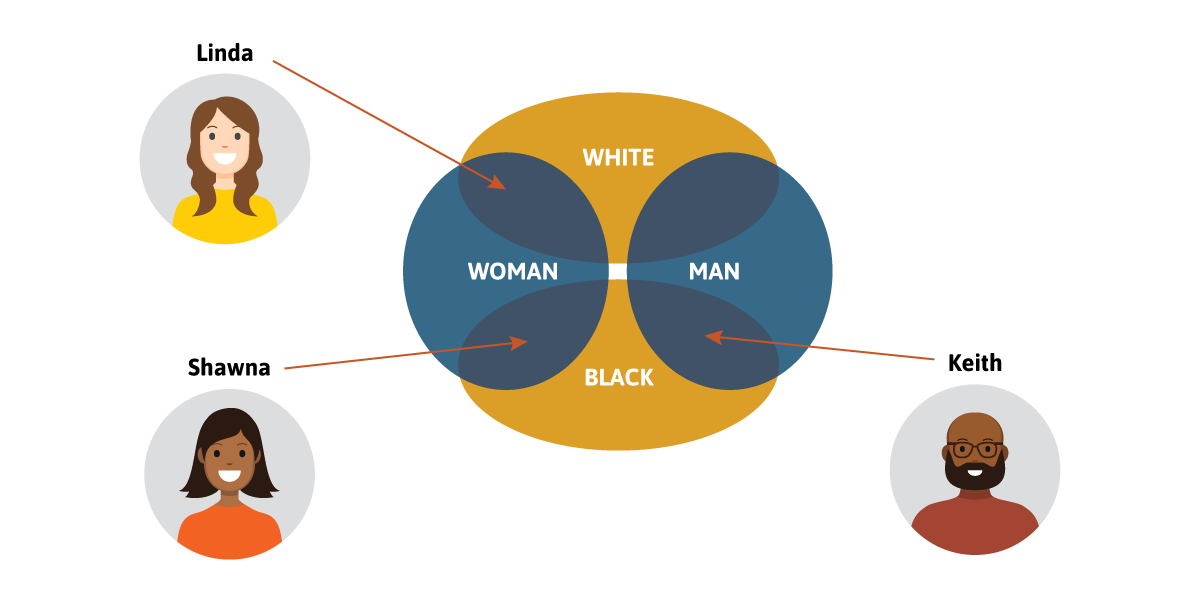


What is intersectionality, and what is the role of identity in the workplace? Before we tackle these two big questions, let’s step back for a simple activity. We’ll call this the “I am…” activity.
Set a timer for one minute. In that window of time, say aloud as many “I am…” statements as possible. Ready? Set? Go.
I am a man. I am a husband. I am a son. I am a manager. I am….
What happened after 10 seconds? 30 seconds? One minute?
Maybe some of the qualities or traits you listed were superficial. Maybe some of them cut to the core of who you really are. Most likely some of them are things that could be easily known about you, while others may be far more private.
But what exactly does this have to do with work? Well, our results and experiences in the workplace are a direct result of our own unique identity—and, similarly, we may not even see how others experience the same workplace differently based on their own unique identity. Many times we undervalue the variety of lived experiences that contribute to our diversity.
Discussing identity in the workplace is a complicated topic, but there are a few very important truths about our identity that we first need to understand:
These may seem like relatively minor points to make, but they actually impact our level of understanding one another to a great extent. When we do not know others very well, the cognitive functioning of our brain strives to sort them into categories and in-groups vs. out-groups, a result of our fight-or-flight instinct that can help us to identify danger. Since this is a fairly instantaneous processing, it is often overly simplistic. Here’s a breakdown of the neuroscience behind this brain function:
Once we understand these two perspectives on identity, it is then important to understand the power of intersectionality. Intersectionality refers to a combination of overlapping identities and can explain how a person can simultaneously experience privilege and oppression, or multiple forms of disadvantage—in Shawna’s case, her experience in the workplace is likely to be quite different than that of colleagues such as Linda (a white female), or that of Keith (a black male).

So a broad focus on improving things for women may leave out quite a bit of her specific experience. Similarly a focus on supporting black employees may not fully address what she faces daily. As Audre Lorde puts it, “there is no such thing as a single-issue struggle, because we do not live single-issue lives.”
In cases where an individual’s intersectionality consists of multiple non-dominant groups, the impact of this out-group dynamic is multiplied, not simply added together. Focusing on the needs of a specific group and identifying underlying issues is an important first step, but we can’t stop there. A “one-size-fits-all” approach often falls short of creating true equity, especially for the most disadvantaged among us. It also does not help us to address underlying issues we may face with individuals directly. Intersectionality can also be complex and significant in a global context, where a different mix of factors such as ethnicity, regional background, age, or religion may be essential components of a person’s identity.
We will never know all of our colleagues in deep and meaningful ways, but we can make a more proactive effort to get to know one another and how people self-identify. This is why there is so much focus on skills like empathy and relationship-building when discussing diversity, equity, and inclusion. It should be our goal to continue to question, learn, and broaden our perspectives to create a more equitable future. You can start off with simple, everyday acts of inclusion like: